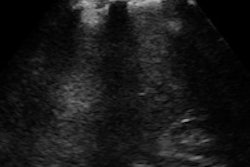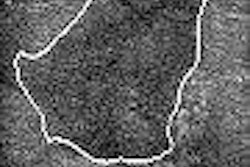Technology based on the seismic exploration of underground oil and gas deposits might form the basis for a new ultrasound system for scanning dense breast tissue. At least that's what a Canadian scientist and a U.K. engineer figured. The pair founded a new start-up called Inner Vision Medical Technologies to develop a technology they call flash ultrasound.
The Calgary, Alberta-based start-up's technology combines new techniques in acoustic-wave analysis with the computational power of super computing. The firm hopes the technology can revolutionize breast imaging and become an important method for imaging the prostate or other anatomy for early cancer detection.
Flash ultrasound was initially developed for geophysical applications as a collaboration between first cousins Tim Davies and Richard Evans. By coincidence, they ended up collaborating on the same military research project in the U.K.
Davies and Evans married seismic exploration principles with the acoustic theories of using sonar underwater to develop a product for medical imaging. They founded InnerVision in 2002 in Alberta, where the oil and gas industry dominates the local economy.
"Our technology came out of sending acoustics back and forth through bedrock," said InnerVision President David Christie. "We can do something conventional ultrasound cannot do, and that's see through bone."
A target dataset is obtained and saved using a transducer array and a proprietary data acquisition system. The company claims that its system is capable of collecting a 3D volume of tissue data in one pulse of its array, in 1/20th of a second. Thus, a complete breast scan could be obtained in one pulse, rather than requiring passing the transducer over the breast as is currently done.
The dataset is then processed using an application-specific supercomputer and proprietary algorithms to render a high-resolution image. The supercomputers would be centralized, with each computer handling a large number of data acquisition systems. Radiologists and clinicians could view images within minutes of acquisition, according to the company.
InnerVision claims that its flash ultrasound systems have detected microcalcifications as small as 0.5 mm in phantoms. The system will also be able to achieve deeper tissue penetration without a corresponding loss of resolution, according to Christie.
Applications
InnerVision sees its flash ultrasound initially as an important adjunct in screening mammography, rather than as the main screening tool, given the amount of data necessary to get Food and Drug Administration approval for primary screening use.
"It has the potential to displace mammography and also targeted breast ultrasound," Christie said, because it addresses and overcomes such common problems as patient comfort, dense and large breasts, and the time necessary to do a conventional mammogram.
"We have fully functional first-generation prototypes that we've done verification of in the lab against FDA-certified calibration phantoms," Christie said. "We're working on our second-generation prototype, principally a data-acquisition system, that's scheduled for completion this fall."
"This should enable us to do our clinical proof of concept," he said. "We have an affiliation with the University of Bristol with a senior medical researcher with vast experience in ultrasound who is ready to go as soon as we get the hardware to him."
No clinical papers have yet been published, but trials are scheduled to start in the first quarter of 2006 at the University of Alberta and in the U.K. Christie said the studies would involve breast, prostate, and carotid artery imaging, and perhaps some musculoskeletal work. Regulatory applications could begin as early as midyear.
InnerVision believes the cost of a flash ultrasound system will be kept low by separating data acquisition and image processing, although the initial technology offering would require a brand-new data acquisition system in the radiology suite. Company technicians are working on a module for tissue characterization that could interface with existing OEM systems.
Christie said InnerVision would initially apply for FDA 510(k) clearance, rather than a premarket approval (PMA), as the company's technology is substantially equivalent to conventional ultrasound.
Chief Operating Officer Geoff Bennett said the company is cautiously planning to raise its public profile to coincide with next year's planned clinical research. As part of this effort, the company plans to show flash ultrasound at the Medtech Insight conference in Irvine, CA, in February 2006.
"We're at a point where we have a solid technical proof of concept using phantoms," Bennett said. "But what people (meaning venture capitalists) really want to see is the clinical proof of concept."
Christie said the first product based on InnerVision technology would likely hit the market in the first half of 2007 as two complete systems, one a research-only device and one a clinical device. Flash ultrasound would be also available to license to ultrasound OEMs, he said.
By Robert Bruce
AuntMinnie.com contributing writer
September 23, 2005
Copyright © 2005 AuntMinnie.com



















